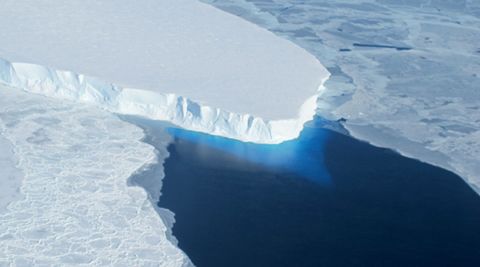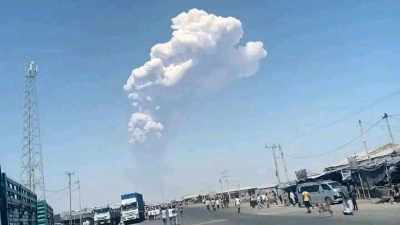Stay updated with the latest - Click here to follow us on Instagram
Antarctica loses 159 gigatonnes ice each year, show Satellite images
Antarctica is now losing about 160 billion tonnes of ice to the ocean annually.
 Antarctica is now losing ice twice as much as when the continent was last surveyed. (AP Photo)
Antarctica is now losing ice twice as much as when the continent was last surveyed. (AP Photo)
Antarctica is now losing about 160 billion tonnes of ice a year to the ocean – twice as much as when the continent was last surveyed, says scientists.
A team of scientists from the UK Centre for Polar Observation and Modelling, led by researchers at the University of Leeds, have produced the first complete assessment of Antarctic ice sheet elevation change.
They used measurements collected by the European Space Agency’s CryoSat-2 satellite mission, which carries an altimeter specially designed for this task.
On average, West Antarctica lost 134 gigatonnes of ice, East Antarctica three gigatonnes, and the Antarctic Peninsula 23 gigatonnes in each year between 2010 and 2013 – a total loss of 159 gigatonnes each year.
The polar ice sheets are a major contributor to global sea level rise and, when combined, the Antarctic losses detected by CryoSat-2 are enough to raise global sea levels by 0.45 millimetres each year alone.
In West Antarctica, ice thinning has been detected in areas that were poorly surveyed by past satellite altimeter missions, said researchers.
These newly-mapped areas contribute additional losses that bring altimeter observations closer to estimates based on other approaches.
But the average rate of ice thinning in West Antarctica has also increased, and this sector is now losing almost one third (31 per cent) as much ice each year than it did during the five year period (2005-2010) prior to CryoSat-2’s launch.
“We find that ice losses continue to be most pronounced along the fast-flowing ice streams of the Amundsen Sea sector, with thinning rates of between 4 and 8 metres per year near to the grounding lines of the Pine Island, Thwaites and Smith Glaciers,” said lead author Dr Malcolm McMillan from the University of Leeds.
This sector of Antarctica has long been identified as the most vulnerable to changes in climate and, according to recent assessments, its glaciers may have passed a point of irreversible retreat.
“The increased thinning we have detected in West Antarctica is a worrying development. It adds concrete evidence that dramatic changes are underway in this part of our planet, which has enough ice to raise global sea levels by more than a metre,” said Professor Andrew Shepherd.
“The increasing contribution of Antarctica to sea-level rise is a global issue, and we need to use every technique available to understand where and how much ice is being lost,” said Professor David Vaughan of the British Antarctic Survey.






- 01
- 02
- 03
- 04
- 05

























